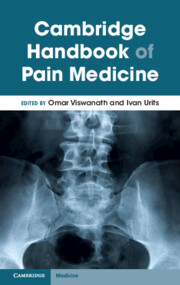Book contents
- Cambridge Handbook of Pain Medicine
- Cambridge Handbook of Pain Medicine
- Copyright page
- Contents
- Contributors
- Pain Handbook Introduction
- Part I Introduction to Pain: Pain Signaling Pathways
- Part II Common Categories of Pharmacologic Medications to Treat Chronic Pain
- Chapter 4 Nonsteroidal Anti-inflammatory Drugs (NSAIDs)
- Chapter 5 Acetaminophen
- Chapter 6 Topicals
- Chapter 7 Muscle Relaxants
- Chapter 8 Opioids
- Chapter 9 Antineuropathic Medications
- Chapter 10 Cannabinoids
- Part III Chronic Pain Conditions Head and Neck
- Part IV Spine
- Part V Extremities
- Part VI Misc
- Part VII Adjunctive Therapy
- Index
- References
Chapter 7 - Muscle Relaxants
from Part II - Common Categories of Pharmacologic Medications to Treat Chronic Pain
Published online by Cambridge University Press: 01 December 2023
- Cambridge Handbook of Pain Medicine
- Cambridge Handbook of Pain Medicine
- Copyright page
- Contents
- Contributors
- Pain Handbook Introduction
- Part I Introduction to Pain: Pain Signaling Pathways
- Part II Common Categories of Pharmacologic Medications to Treat Chronic Pain
- Chapter 4 Nonsteroidal Anti-inflammatory Drugs (NSAIDs)
- Chapter 5 Acetaminophen
- Chapter 6 Topicals
- Chapter 7 Muscle Relaxants
- Chapter 8 Opioids
- Chapter 9 Antineuropathic Medications
- Chapter 10 Cannabinoids
- Part III Chronic Pain Conditions Head and Neck
- Part IV Spine
- Part V Extremities
- Part VI Misc
- Part VII Adjunctive Therapy
- Index
- References
Summary
Muscle relaxants are a group of medications that may be used to treat muscle spasticity due to upper motor neuron syndromes, and muscular pain due to peripheral musculoskeletal disease or injuries such as low back pain. They may combat either spasticity or muscle spasm and contribute to increased patient comfort either alone or as part of a multimodal analgesic regimen. The National Institute of Neurological Disorders and Stroke defines spasticity as the abnormal increase in muscular tone, which ultimately interferes with daily movement activities and is accompanied with pain or discomfort. Muscle spasms are involuntary localized muscle contractions resulting from acute trauma or muscle strain. The clinical presentation includes muscle spasms, contracture, and clonus, amongst many other symptoms. The etiology of spasticity is diverse, including cerebral palsy, stroke, spinal cord injuries, multiple sclerosis, and inherited, acquired metabolic diseases. Management for spasticity includes usage of muscle relaxant pharmacologic agents.
- Type
- Chapter
- Information
- Cambridge Handbook of Pain Medicine , pp. 53 - 57Publisher: Cambridge University PressPrint publication year: 2023

